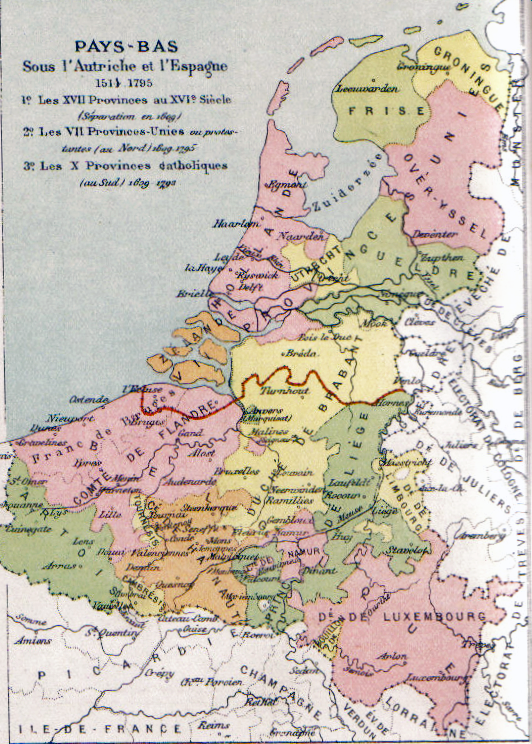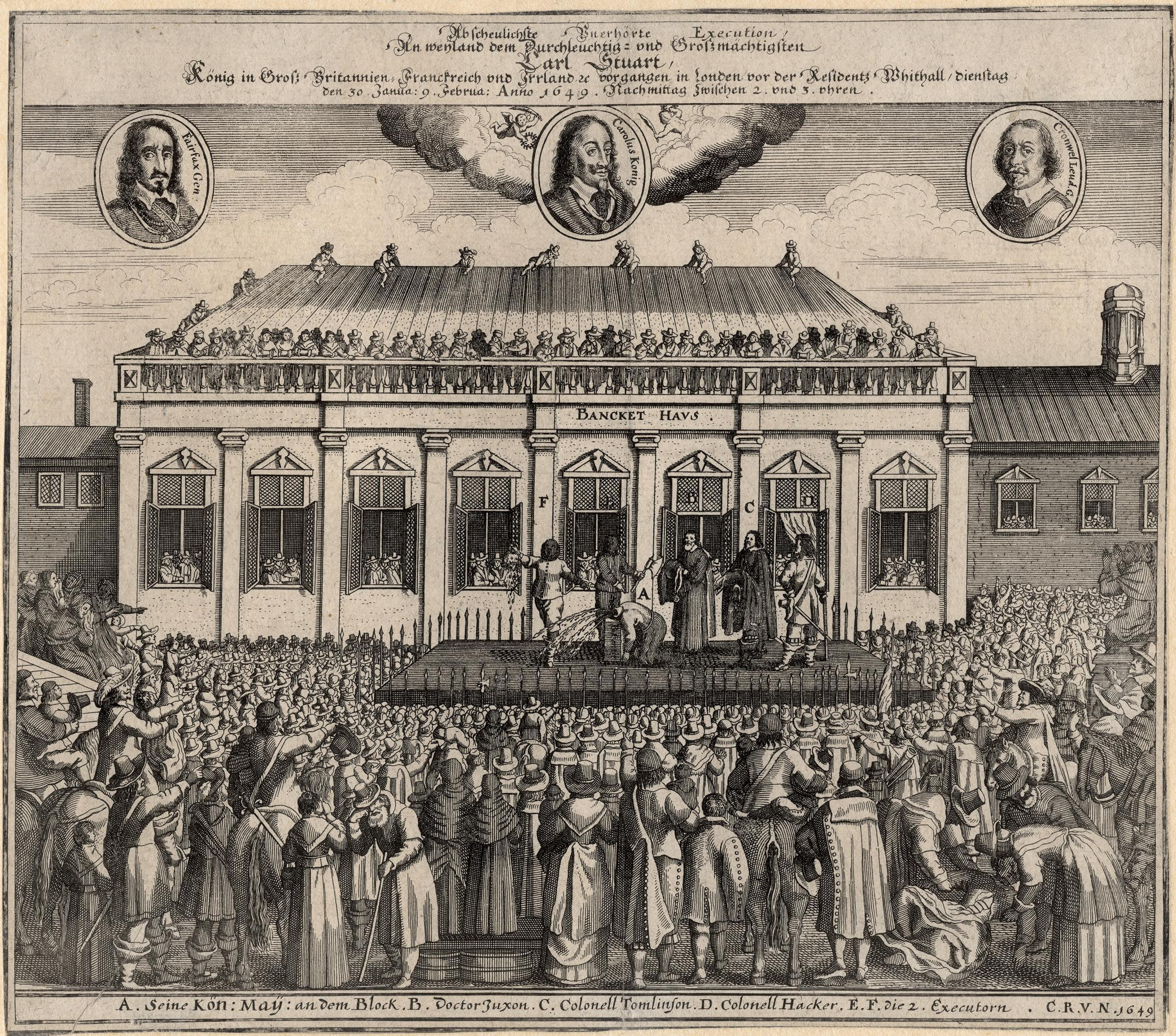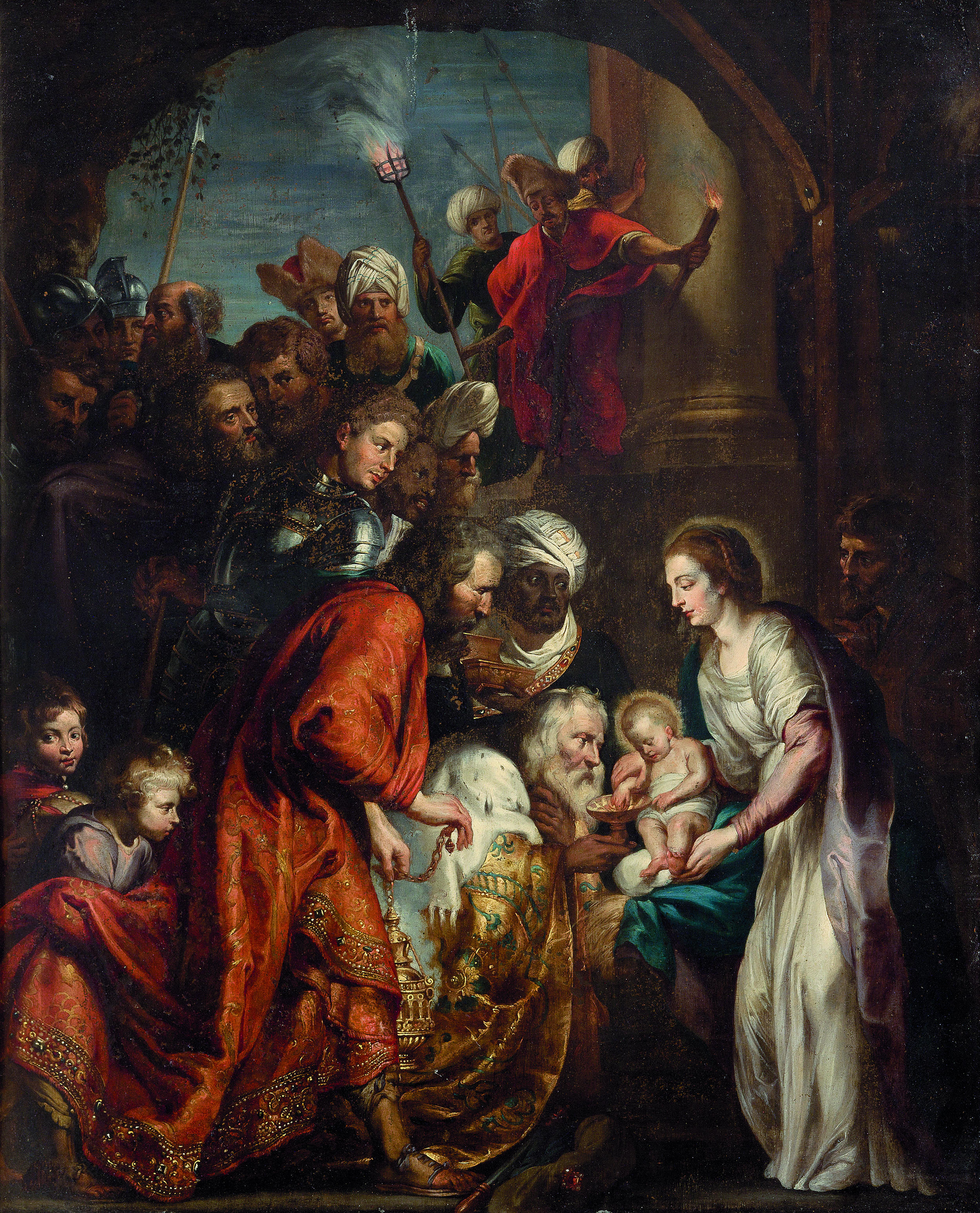|
Vincenzo Armanno
Vincenzo Armanno (c. 1599–1649) was a Flemish or Dutch landscape painter, who was active in Rome in the 1640s. The only source of information about Vincenzo Armanno is the 17th century Roman biographer Giovanni Battista Passeri who in his book ''Vite de pittori, scultori ed architetti: che anno lavorato in Roma, morti dal 1641 fino al 1673'' included a chapter about Armanno.Giovanni Battista Passeri, ''Vite de pittori, scultori ed architetti: che anno lavorato in Roma, morti dal 1641 fino al 1673'' Presso Gregorio Settari, 1772 Since the publication of Passeri's book there has been a lot of speculation by art historians about the identity of this Vincenzo Armanno. Some historians have argued he is an unknown painte ... [...More Info...] [...Related Items...] OR: [Wikipedia] [Google] [Baidu] |
Southern Netherlands
The Southern Netherlands, also called the Catholic Netherlands, were the parts of the Low Countries belonging to the Holy Roman Empire which were at first largely controlled by Habsburg Spain (Spanish Netherlands, 1556–1714) and later by the Austrian Habsburgs (Austrian Netherlands, 1714–1794) until occupied and annexed by Revolutionary France (1794–1815). The region also included a number of smaller states that were never ruled by Spain or Austria: the Prince-Bishopric of Liège, the Imperial Abbey of Stavelot-Malmedy, the County of Bouillon, the County of Horne and the Princely Abbey of Thorn. The Southern Netherlands comprised most of modern-day Belgium and Luxembourg, small parts of the modern Netherlands and Germany (the Upper Guelders region, as well as the Bitburg area in Germany, then part of Luxembourg), in addition to (until 1678) most of the present Nord-Pas-de-Calais region, and Longwy area in northern France. The (southern) Upper Guelders region consisted ... [...More Info...] [...Related Items...] OR: [Wikipedia] [Google] [Baidu] |
Godefridus Johannes Hoogewerff
Godefridus Johannes Hoogewerff (1884-1963) was a Dutch art historian. Life Born in Amersfoort and studying in that town's gymnasium, from 1903 to 1908 he studied at the University of Utrecht, during which time he catalogued the manuscripts of that city's Aartsbischoppelijk Museum. In 1909 he made his first visit to Rome, basing himself at the Nederlands Historisch Instituut te Rome whilst he researched his doctoral dissertation on Dutch painters working in Italy in the 16th century, supervised by Willem Vogelsang, whose assistant Hoogewerff had become in 1908. He gained his doctorate in 1912 but stayed on at the Instituut, eventually in 1923 becoming its Director. He also researched Dutch illuminated manuscripts and early Dutch painting and from 1922 to 1925 he and A. W. Byvanck edited the three-volume ''Noord-Nederlandsche Miniaturen''. He also specialised in Jan van Scorel, publishing a French-language monograph on him in 1923 and another in Dutch in 1941. His initial retiremen ... [...More Info...] [...Related Items...] OR: [Wikipedia] [Google] [Baidu] |
Flemish Baroque Painters
Flemish (''Vlaams'') is a Low Franconian dialect cluster of the Dutch language. It is sometimes referred to as Flemish Dutch (), Belgian Dutch ( ), or Southern Dutch (). Flemish is native to Flanders, a historical region in northern Belgium; it is spoken by Flemings, the dominant ethnic group of the region. Outside of Flanders, it is also spoken to some extent in French Flanders and the Dutch Zeelandic Flanders. Terminology The term ''Flemish'' itself has become ambiguous. Nowadays, it is used in at least five ways, depending on the context. These include: # An indication of Dutch written and spoken in Flanders including the Dutch standard language as well as the non-standardized dialects, including intermediate forms between vernacular dialects and the standard. Some linguists avoid the term ''Flemish'' in this context and prefer the designation ''Belgian-Dutch'' or ''South-Dutch'' # A synonym for the so-called intermediate language in Flanders region, the # An indica ... [...More Info...] [...Related Items...] OR: [Wikipedia] [Google] [Baidu] |
Dutch Male Painters
Dutch commonly refers to: * Something of, from, or related to the Netherlands * Dutch people () * Dutch language () Dutch may also refer to: Places * Dutch, West Virginia, a community in the United States * Pennsylvania Dutch Country People Ethnic groups * Germanic peoples, the original meaning of the term ''Dutch'' in English ** Pennsylvania Dutch, a group of early Germanic immigrants to Pennsylvania *Dutch people, the Germanic group native to the Netherlands Specific people * Dutch (nickname), a list of people * Johnny Dutch (born 1989), American hurdler * Dutch Schultz (1902–1935), American mobster born Arthur Simon Flegenheimer * Dutch Mantel, ring name of American retired professional wrestler Wayne Maurice Keown (born 1949) * Dutch Savage, ring name of professional wrestler and promoter Frank Stewart (1935–2013) Arts, entertainment, and media Fictional characters * Dutch (''Black Lagoon''), an African-American character from the Japanese manga and anime ''Black ... [...More Info...] [...Related Items...] OR: [Wikipedia] [Google] [Baidu] |
Dutch Golden Age Painters
Dutch Golden Age painting is the painting of the Dutch Golden Age, a period in Dutch history roughly spanning the 17th century, during and after the later part of the Eighty Years' War (1568–1648) for Dutch independence. The new Dutch Republic was the most prosperous nation in Europe and led European trade, science, and art. The northern Netherlandish provinces that made up the new state had traditionally been less important artistic centres than cities in Flanders in the south. The upheavals and large-scale transfers of population of the war, and the sharp break with the old monarchist and Catholic cultural traditions, meant that Dutch art had to reinvent itself almost entirely, a task in which it was very largely successful. The painting of religious subjects declined very sharply, but a large new market for all kinds of secular subjects grew up. Although Dutch painting of the Golden Age is included in the general European period of Baroque painting, and often shows many o ... [...More Info...] [...Related Items...] OR: [Wikipedia] [Google] [Baidu] |
17th-century Flemish Painters
The 17th century lasted from January 1, 1601 ( MDCI), to December 31, 1700 ( MDCC). It falls into the early modern period of Europe and in that continent (whose impact on the world was increasing) was characterized by the Baroque cultural movement, the latter part of the Spanish Golden Age, the Dutch Golden Age, the French ''Grand Siècle'' dominated by Louis XIV, the Scientific Revolution, the world's first public company and megacorporation known as the Dutch East India Company, and according to some historians, the General Crisis. From the mid-17th century, European politics were increasingly dominated by the Kingdom of France of Louis XIV, where royal power was solidified domestically in the civil war of the Fronde. The semi-feudal territorial French nobility was weakened and subjugated to the power of an absolute monarchy through the reinvention of the Palace of Versailles from a hunting lodge to a gilded prison, in which a greatly expanded royal court could be more easily ... [...More Info...] [...Related Items...] OR: [Wikipedia] [Google] [Baidu] |
1649 Deaths
Events January–March * January 4 – In England, the Rump Parliament passes an ordinance to set up a High Court of Justice, to try Charles I for high treason. * January 17 – The Second Ormonde Peace concludes an alliance between the Irish Royalists and the Irish Confederates during the War of the Three Kingdoms. Later in the year the alliance is decisively defeated during the Cromwellian conquest of Ireland. * January 20 – Charles I of England goes on trial, for treason and other "high crimes". * January 27 – King Charles I of England, Scotland and Ireland is found guilty of high treason in a public session. He is beheaded three days later, outside the Banquet Hall in the Palace of Whitehall, London. * January 29 – Serfdom in Russia begins legally as the Sobornoye Ulozheniye (, "Code of Law") is signed by members of the Zemsky Sobor, the parliament of the estates of the realm in the Tsardom of Russia. Slaves and free peasants are con ... [...More Info...] [...Related Items...] OR: [Wikipedia] [Google] [Baidu] |
Herman Van Swanevelt
Herman van Swanevelt (1603 – 1655) was a Dutch people, Dutch painter and etcher from the Baroque painting, Baroque era. Life Herman was born in Woerden to a family of thriving artisans whose ancestors included the famous painter Lucas van Leyden. The identity of Swanevelt’s teacher remains a mystery. A new hypothesis suggests that he was a pupil of Willem Buytewech. He painted his first signed and dated works in 1623 in Paris. In 1629 he moved to Rome, where he painted many landscapes, and introduced a new type of idyllic landscape with sunlit 'contrejours' reflecting the times of day. Swanevelt became a member of the Bentvueghels; his alias was "hermit, heremiet", while he preferred to work alone. Created and developed by Paul Bril and Cornelis van Poelenburch from 1600 onward, the genre of the “Italianate landscape” entered its classical phase in the 1630s with the advent of Swanevelt and his friends and contemporaries Pieter van Laer and Claude Lorrain. His painti ... [...More Info...] [...Related Items...] OR: [Wikipedia] [Google] [Baidu] |
Vincent Adriaenssen
Vincent Adriaenssen (name variations: Vincent Adriaensz, Vincent Adriani, Vincenz Leckerbetien, Vincent Leckerbeetjen, nicknames: le Manchole, Il Manciola, Il Manciolla en Il Mozzo di Anversa) (1595–1675) was a Flemish Baroque painter who spent an important part of his career in Paris and Rome where he was especially renowned for his landscapes with battles and hunting scenes. Life He was born into an artistic family in Antwerp. His father Emanuel Adriaenssen was a prominent lutenist and composer. His older brother Alexander Adriaenssen was a successful painter specializing in still lifes and his younger brother Niclaes Adriaenssen was a portrait painter. He later became the father-in-law of the painter Jan de Momper. It is believed that he received his first art training from his brother Alexander. He is traceable in Rome from 1625 to about 1645. He worked also on projects in Paris from 1642 to 1645 and then again in 1648 where he worked for Cardinal Mazarin and Cardinal R ... [...More Info...] [...Related Items...] OR: [Wikipedia] [Google] [Baidu] |
Netherlands Institute For Art History
The Netherlands Institute for Art History or RKD (Dutch: RKD-Nederlands Instituut voor Kunstgeschiedenis), previously Rijksbureau voor Kunsthistorische Documentatie (RKD), is located in The Hague and is home to the largest art history center in the world. The center specializes in documentation, archives, and books on Western art from the late Middle Ages until modern times. All of this is open to the public, and much of it has been digitized and is available on their website. The main goal of the bureau is to collect, categorize, and make art research available, most notably in the field of Dutch Masters. Via the available databases, the visitor can gain insight into archival evidence on the lives of many artists of past centuries. The library owns approximately 450,000 titles, of which ca. 150,000 are auction catalogs. There are ca. 3,000 magazines, of which 600 are currently running subscriptions. Though most of the text is in Dutch, the standard record format includes a lin ... [...More Info...] [...Related Items...] OR: [Wikipedia] [Google] [Baidu] |
Dutch Republic
The United Provinces of the Netherlands, also known as the (Seven) United Provinces, officially as the Republic of the Seven United Netherlands (Dutch: ''Republiek der Zeven Verenigde Nederlanden''), and commonly referred to in historiography as the Dutch Republic, was a federal republic that existed from 1579, during the Dutch Revolt, to 1795 (the Batavian Revolution). It was a predecessor state of the Netherlands and the first fully independent Dutch nation state. The republic was established after seven Dutch provinces in the Spanish Netherlands revolted against rule by Spain. The provinces formed a mutual alliance against Spain in 1579 (the Union of Utrecht) and declared their independence in 1581 (the Act of Abjuration). It comprised Groningen, Frisia, Overijssel, Guelders, Utrecht, Holland and Zeeland. Although the state was small and contained only around 1.5 million inhabitants, it controlled a worldwide network of seafaring trade routes. Through its tradin ... [...More Info...] [...Related Items...] OR: [Wikipedia] [Google] [Baidu] |
Vincent Malo
Vincent Malo or Vincent Malo I ( Cambrai c. 1602 or 1606 – Rome, 14 April 1644) was a Flemish painter who after training and working in Antwerp was mainly active in Italy, where he was known, amongst others, as Vincenzo Malo, Vincenzo Malò and Vincenzio Malo.Vincent Malo (I) at the Netherlands Institute for Art History Vincent Malo painted as well as religious and mythological subjects and, occasionally, portraits. Life Due to a lack of reliable sources, the details of Vincent Malo's life are not well established. In 1662 the Flemish biographer |






